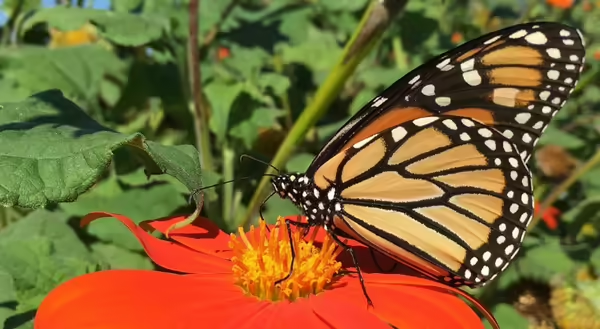
In recent years, gardeners have become increasingly interested in maximizing the benefits their garden spaces can provide for pollinating insects. We know that these important insect friends are struggling with declining populations reported by research from around the globe, which had put additional emphasis on the need for more pollinator habitat.
Gardners and researchers alike have started to look more closely at how urban landscapes can better provide the needs of pollinators, exploring new ways to maximize the benefit of smaller spaces in urban areas. As the global trend toward increasing urban areas and decreasing wildlife habitat continues across the US and abroad, there is a growing need for additional, quality habitat in our urban centers.
A recent research paper from the United Kingdom identified some interesting relationships among gardens across a large swath of the city of Bristol, UK. While this research is from the other side of the Atlantic, there are some lessons within that provide perspective on the value of our own pollinator gardens, some of which is also supported by research in the US.
This research assessed nectar production in urban gardens by measuring floral resources throughout the 2019 growing season in 59 separate gardens of varying sizes and compositions. Nectar is a very important, sustaining food source for pollinators. It’s the sugary liquid that flowers produce to lure in insects which then come in contact with pollen while feeding. Pollen, which carries male genetics, is then spread by the insects to other plants contacting female flower parts and completing the process of pollination which is vital to plant reproduction.
As with many US landscapes, these gardens were dominated by non-native species, comprising 77% of all plants in the study and accounting for an amazing 90.5% of total nectar production. While non-native plants don’t provide many of the other benefits that natives may, such as support of larvae or creation of nesting habitat, they can be quite productive sources of food. Consequently, they tend to only provide benefit as a food source and fail to support other aspects of the insect lifecyle.
The peak total nectar production across all gardens in the study was much as we might expect in Illinois, topping out in early July, but researchers noted that individual garden’s maximum nectar output varied across the growing season. There was at least one garden that reached peak nectar production in each month of the study from March to October indicating a diverse season of blooms were available across the city.
The single most productive garden in the study produced almost 700 times more nectar that the least productive, illustrating the wide difference of plants across all gardens. In total, over 2 million flowers were assessed in this study, representing 636 plant taxa from 98 different families.
Interestingly, woody plants accounted for almost 2/3 of total nectar production in the study. That is music to my ears as a tree lover, but I am not sure that a similar relationship would hold true in Illinois gardens, although I’ve not read any research with that comparison.
However, the high nectar production in woody plants was partially attributed to more efficient use of space since trees and shrubs have the advantage of height over shorter, herbaceous flowering plants. This point may build a case for inclusion of more insect-pollinated trees and shrubs in pollinator gardens to make use of vertical space, especially when garden area is limited.
Perhaps the most interesting discovery in this study lies in the finding that garden size did not correlate with nectar production, meaning that a larger garden doesn’t necessarily mean more floral resources for pollinators. I have always thought the opposite to be true, but this result is encouraging for those of us with limited space.
The researchers summed up this finding by saying, “Our study shows that it is not necessary for a gardener to have a large garden to provide pollinators with a large supply of nectar because it is how they choose to garden which is most important.”
So, even if you don’t have a large area to plant, a small garden with carefully chosen plants can be incredibly beneficial to pollinators. Many highly valuable pollinator plants also grow wonderfully in containers, making it possible to support pollinators in even the smallest of spaces.
If you are interested in learning more about how you can incorporate high-quality pollinator plants in your garden space, visit the Illinois Extension Pollinator Pockets website for more information at https://extension.illinois.edu/cfiv/pollinator-pockets.
References:
Tew et al. 2021. Turnover in floral composition explains species diversity and temporal stability in the nectar supply of urban residential gardens. Journal of Applied Ecology. 00: 1-11. https://doi.org/10.1111/1365-2664.14094